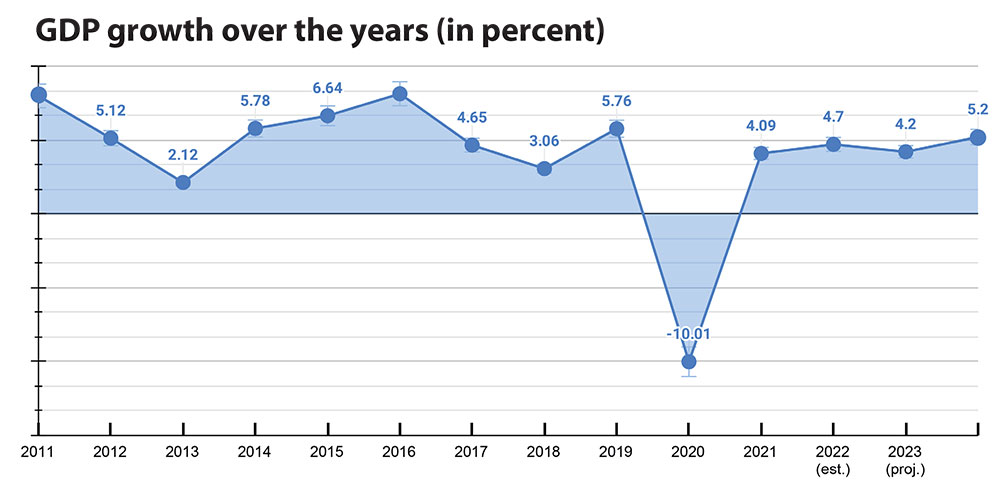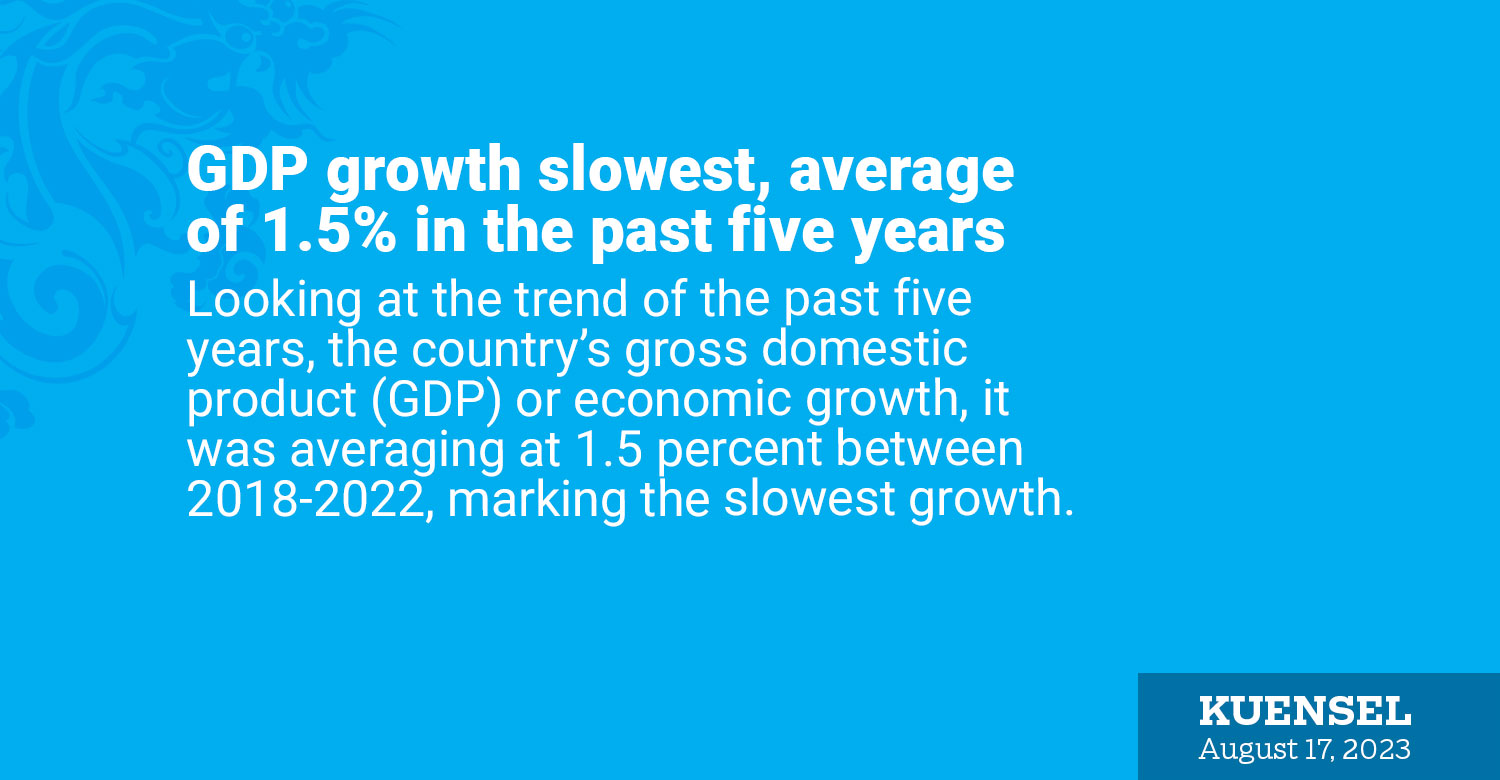Thukten Zangpo
Looking at the trend of the past five years, the country’s gross domestic product (GDP) or economic growth, it was averaging at 1.5 percent between 2018-2022, marking the slowest growth.
The 2022’s growth of 4.7 percent is based on the estimated figure of the finance ministry.
Bhutan’s economic growth saw an average growth of 5.5 percent between 2013-2017. Between 2001 and 2010, the country’s economic growth was climbing at an average growth of 8.7 percent.
In the 2000s, the growth was mainly driven by the construction and operationalisation of large hydropower projects. At the same time, strong performance of the service sector, especially tourism, also contributed to the growth.

Between 2016 and 2019, there was a slowdown in hydropower construction, lower electricity production because of inadequate rainfall in some years, and weak growth in the manufacturing sector.
The GDP growth saw an increasing trend which continued until the GDP reached negative 10.1 percent in 2020 as strict Covid-19-related controls were started from March of the same year.
Despite the country’s electricity production growing in 2020 by 31 percent, it was offset by contraction in the production and manufacturing industry by 20.76 percent, mining and construction sectors by 20 percent.
However, the post-pandemic scenario has been positive to the country’s GDP in the year 2021, where the GDP grew to 4.09 percent contributed by growth in many sectors.
A shrinking of GDP results in loss of jobs, decrease in people’s income levels, and consumption capacity. It also means lower profits for companies, including government corporations.
When GDP goes up, the economy is growing; people are spending more and businesses are expanding. GDP growth is a key measure of the overall strength of an economy.
If we look at the three major sectors that contribute to the GDP, the tertiary sector that includes health and education, transport and communication, and wholesale and retail trade, was the most significant and the fastest expanding sector of the economy. The sector’s contribution to GDP grew from 43.43 percent in 2012 to 46.61 percent in 2021.
In the same period, the primary sector that includes agriculture, livestock, and forestry have been growing, accounting for 13.96 percent to 19.19 percent.
However, the secondary sector’s share of GDP saw a decline from 42.61 percent to 36.2 percent, which includes construction, manufacturing, mining, and quarrying, among others.
The finance ministry had projected economic growth of 4.7 percent last year, 4.2 percent this year, and 5.2 percent next year, mainly because of commissioning of Nikachhu hydropower in December this year and Punatshangchhu-II in December next year.
Bhutan’s aim is to double the GDP to USD 5 billion by 2029 and USD 10 billion by 2034.
The country’s GDP was at USD 2.54 billion or Nu 187.77 billion in 2021.
It would be very difficult for the country to double the GDP at the current growth rate; the country’s yearly growth rate has to be 11.7 percent to meet the USD 10 billion.


